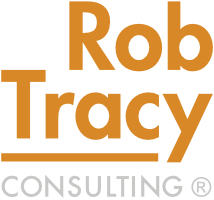As I discussed in my last blog post, establishing a workforce you can be proud of starts from within by assessing your company’s talent brand status. Once you’ve done that, the next step is determining the strategy behind your Talent Pipeline.
Determine Your Talent Pipeline
The term “Talent Pipeline” is shorthand for the target population where you want to hire from and the tactics that you’ll use to attract these communities to your company.
Here are a few examples:
| Target Population | Tactic |
| Military veterans | Partnership with a local veteran placement organization |
| Vocational school graduates | Participation in job fairs at the school |
| Immigrant communities | Postings at the local community center in the native language |
| Workers currently employed at a nearby factory | Referral bonus to current employees |
| High school students | Participation in job fairs, hosting tours on Manufacturing Day |
| Current employees | Internal education |
Your options are only limited by your imagination. The important part of selecting your Talent Pipeline is that you will need to pick a strategy and execute it with rigor, dedication and persistence. Pipelines take time to mature because communities want to know that you’re committed to them. The world has become a skeptical and distrustful place, and you should expect that you may not be greeted warmly at the beginning. Your trust will need to be earned.
However, as with any change, there will be early adopters. So, when you start putting flyers up at the veterans’ center, you might get a small amount of interest right off the bat. But the majority of people will withhold and wait to see what happens. If these early adopters provide positive feedback about their experience, then others will join and momentum will build.
Why Companies Should Avoid Temp Agencies
Many mid-market companies have turned to temp agencies to solve their staffing challenges. The reason behind this is that temp agencies often have access to more people through a broader network. They also remove the risk of hiring because the temp staff who isn’t panning out can be removed easily.
Temp agencies are a fine solution if a company has short-term needs. Ideally, the agency can help you ramp up and ramp down quickly. That being said, I am inclined against the use of temp-to-hire models for several reasons:
- Management of the workforce should be strategic and not transactional. Developing a robust Talent Pipeline will provide a source of employees that better matches your needs.
- Temp agencies will not able to tell the story of your brand like you can. They represent many employers, which means they will not be as committed to selling your story as you.
- Companies will not attract the best workers by going through a temp agency. Top workers are typically not willing to go through a three- to six-month trial period as a temp worker just to see if they’ll make it.
- In my experience, when temps make up a significant portion of your workforce it creates a class system within the factory. They have different compensation, different benefits, and they are treated differently. Compared with permanent employees, temps often get treated like second class citizens. This makes it very difficult to have a fully engaged and aligned workforce.
With a strong employment brand and an established Talent Pipeline of potential employees, the next step is the hiring process itself. Stay tuned!
In the meantime, if you’d like an extra hand in determining your Talent Pipeline and the strategy that needs to be implemented behind it, drop me a line.
